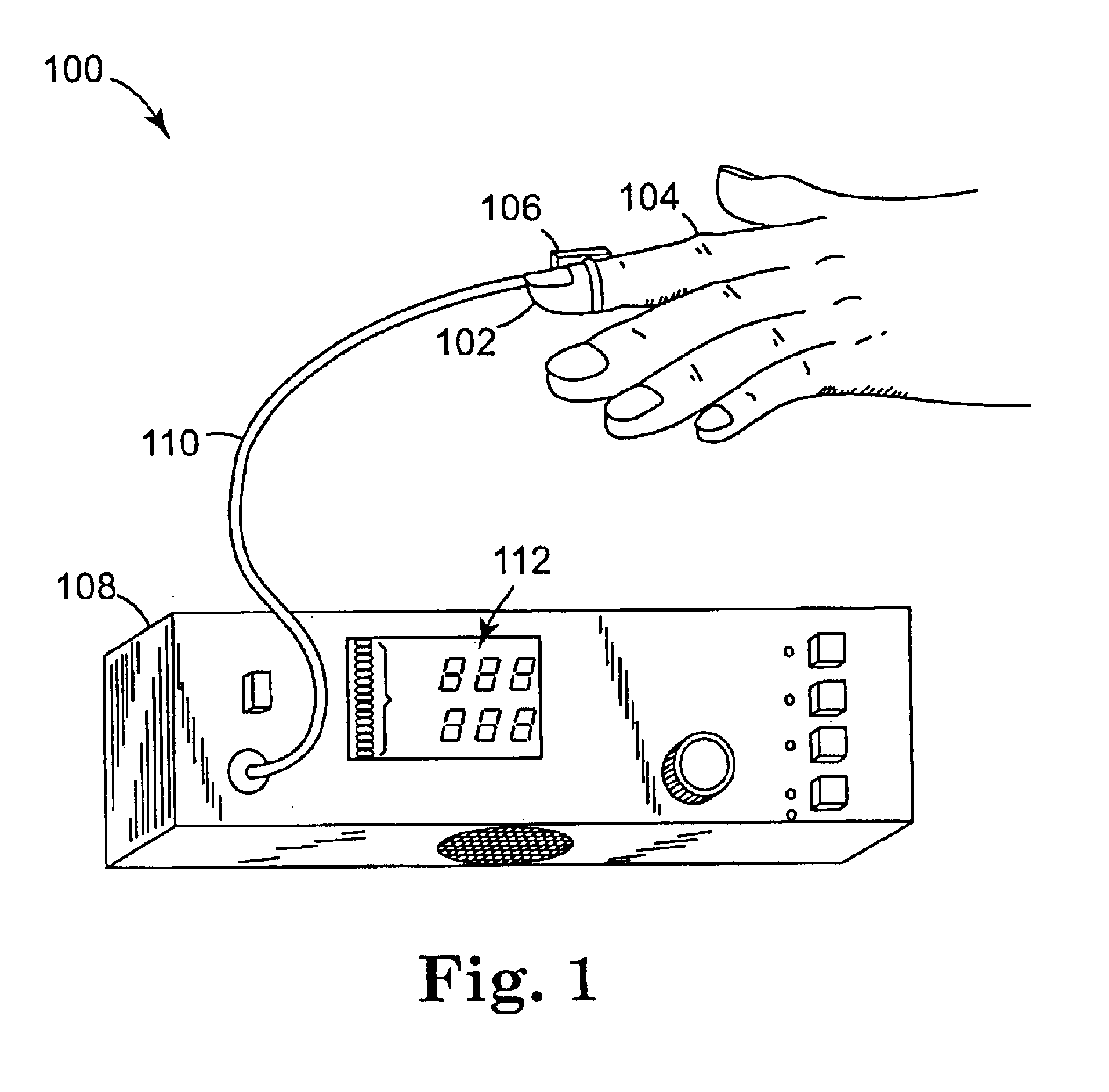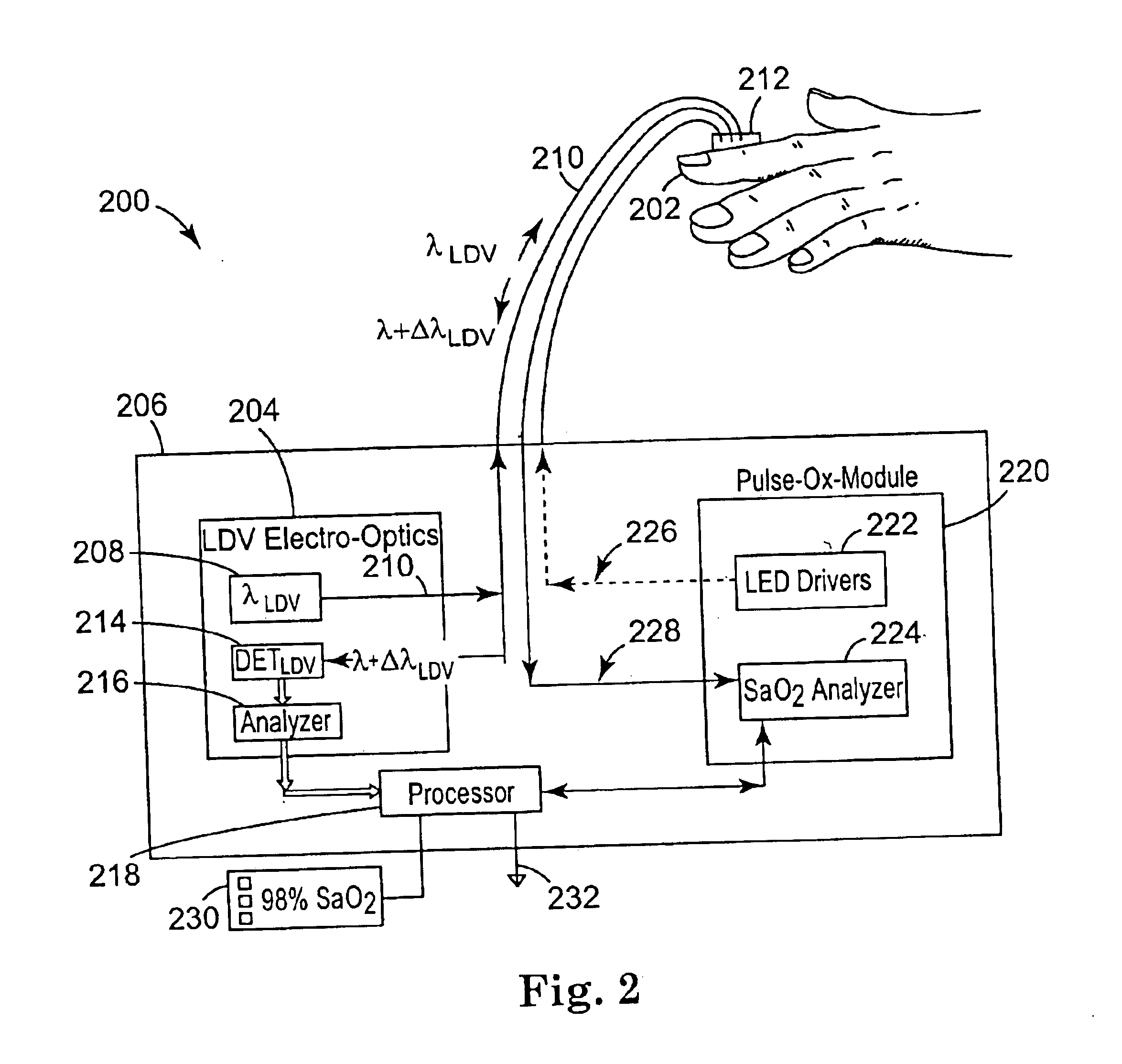Pulse oximeter with motion detection
a motion detection and pulse oximeter technology, applied in the field of medical devices, can solve problems such as blood flow reduction, data corruption, oxygen saturation level,
- Summary
- Abstract
- Description
- Claims
- Application Information
AI Technical Summary
Benefits of technology
Problems solved by technology
Method used
Image
Examples
Embodiment Construction
The present invention is applicable to medical devices and is believed to be particularly useful for non-invasive optical physiologic sensors.
Generally, the present invention relates to a method of measurement that augments the existing non-invasive pulse oximetry methodologies. Advanced algorithms have been developed recently for improving pulse-oximetry measurements, based on only measurements of hemoglobin oxygen saturation. The present invention is directed to the use of additional input signals, that may be used along with the new algorithms, to improve the quality of the pulse-oximetry measurement. In addition to pulse oximetry, other optical measurement techniques such as the non-invasive measurement of blood glucose can benefit from the present invention.
Pulse oximetry utilizes the pulsatile nature of blood flow to synchronize the optical measurement of oxygenated and reduced (de-oxygenated) hemoglobin. Typical commercially available pulse oximeters have two light emitting d...
PUM
 Login to View More
Login to View More Abstract
Description
Claims
Application Information
 Login to View More
Login to View More - R&D
- Intellectual Property
- Life Sciences
- Materials
- Tech Scout
- Unparalleled Data Quality
- Higher Quality Content
- 60% Fewer Hallucinations
Browse by: Latest US Patents, China's latest patents, Technical Efficacy Thesaurus, Application Domain, Technology Topic, Popular Technical Reports.
© 2025 PatSnap. All rights reserved.Legal|Privacy policy|Modern Slavery Act Transparency Statement|Sitemap|About US| Contact US: help@patsnap.com



